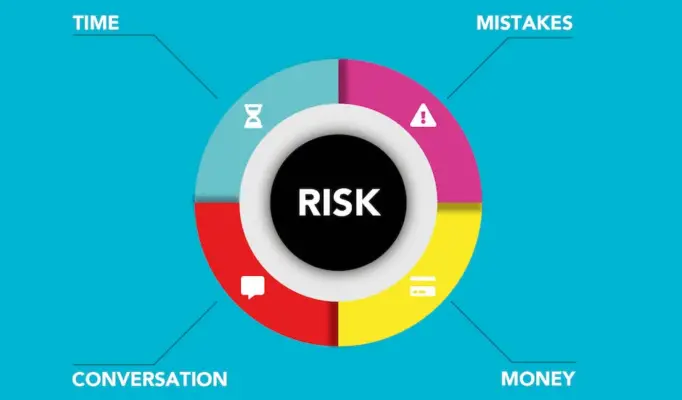A business continuity plan (BCP) is a comprehensive plan that outlines procedures and strategies to minimize the impact of potential disruptions to business operations.
A BCP can help businesses prepare for unexpected events such as natural disasters, cyber-attacks, or pandemics. It provides a framework for businesses to continue operations during and after an emergency, ensuring that essential services are maintained and customers are satisfied.
A business continuity plan checklist template is a valuable tool to help businesses develop a comprehensive BCP. It provides a step-by-step guide to help organizations identify potential risks, assess the impact of those risks, and develop a plan to mitigate them.

The template can be customized to meet the organisation’s specific needs, ensuring that all critical functions are identified and appropriate measures are taken to ensure their continuity.
Key Takeaways
- A business continuity plan (BCP) is a comprehensive plan that outlines procedures and strategies to minimize the impact of potential disruptions to business operations.
- A business continuity plan checklist template is a valuable tool that can help businesses develop a comprehensive BCP.
- The template can be customized to meet the organisation’s specific needs, ensuring that all critical functions are identified and appropriate measures are taken to ensure their continuity.
Understanding Business Continuity
Defining Business Continuity
Business continuity is the process of ensuring that an organization can continue to operate during and after a disaster or other disruptive event.
It involves identifying potential risks and developing plans to minimize the impact of those risks on the organization. The ultimate goal of business continuity planning is to ensure that critical business functions can continue, even in the face of adversity.
Importance of Business Continuity Planning
Business continuity planning is essential for the success of any organization. Disasters and other disruptive events can strike at any time, and without a plan in place, an organization may be unable to recover from the damage.
By developing a comprehensive business continuity plan, an organization can ensure that it is prepared for any eventuality and can continue to operate even in the face of adversity.
Business continuity planning involves identifying potential risks, assessing the impact of those risks on the organization, and developing plans to minimize the impact of those risks.
This may involve developing backup systems and processes, identifying alternative suppliers, and establishing procedures for communication and decision-making during a crisis.
Business continuity planning is critical for any organization that wants to ensure its success. By identifying potential risks and developing plans to minimize their impact, an organization can continue to operate even in the face of adversity.
Preparation and Analysis
Before creating a business continuity plan (BCP), preparing and analysing the organization’s critical functions and services is essential.
Two crucial steps in this process are conducting a business impact analysis (BIA) and risk assessment and management.
Conducting Business Impact Analysis
A BIA is a process of identifying and evaluating the potential impact of disruptions to critical business functions and services. It helps organizations prioritize their resources and efforts to ensure continuity during and after an incident.
The BIA should identify the critical functions and services that are essential to the organization’s operations, the impact of their disruption, and the maximum tolerable downtime for each function or service. The BIA should also identify the resources required to recover these functions and services.
Risk Assessment and Management
Risk assessment and management identify, analyse, and evaluate potential risks that could impact the organization’s operations. It helps organizations prioritize their resources and efforts to mitigate and manage these risks.
The risk assessment should identify potential risks, their likelihood, and their potential impact on the organization’s critical functions and services. The organization should then develop strategies to mitigate and manage these risks.
The risk management plan should include a risk register, which is a document that lists all identified risks, their likelihood, potential impact, and the strategies to mitigate and manage them.
It should also include a risk mitigation plan that outlines the actions required to reduce the likelihood and impact of identified risks.
An organization can identify its critical functions and services, potential risks, and strategies to mitigate and manage them by conducting a BIA and risk assessment and management. This information is essential in developing an effective BCP that ensures continuity during and after an incident.

Plan Development
Creating the Business Continuity Plan
The business continuity plan is a critical document outlining the processes and procedures an organization must follow to recover from a disaster or emergency.
The plan should be developed with the input of all stakeholders, including management, IT personnel, and other key personnel. The plan should be reviewed and updated regularly to ensure that it remains relevant and effective.
To create an effective business continuity plan, the organization should first identify its critical processes and objectives. These may include key business functions, such as customer service, sales, or production.
The organization should then identify the resources required to support these processes, such as IT systems, personnel, and equipment.
Next, the organization should identify the potential risks and threats that could disrupt these critical processes. This may include natural disasters, cyber-attacks, or other emergencies.
The organization should then develop strategies to mitigate these risks and minimize the impact of the disruption on the business.
Determining Recovery Strategies
Once the organization has identified its critical processes and risks, it should develop recovery strategies that will enable it to quickly recover from a disaster or emergency. These strategies may include backup systems, redundant equipment, and alternative work locations.
The recovery strategies should be designed to ensure that the critical processes can be resumed as quickly as possible.
The organization should also develop a communication plan that will enable it to quickly notify employees, customers, and other stakeholders about the disruption and the steps that are being taken to recover.
Developing a business continuity plan is a critical process that requires the input of all stakeholders. The plan should be regularly reviewed and updated to remain relevant and effective.
By identifying critical processes, risks, and recovery strategies, the organization can minimize the impact of a disruption on its business and ensure that it can quickly recover from a disaster or emergency.
Implementation
Once the business continuity plan has been developed, the next step is to implement it. This section outlines the key steps in implementing a business continuity plan checklist template.
Roles and Responsibilities
The first step in implementing the business continuity plan is to assign roles and responsibilities to the team members.
This includes identifying the emergency manager responsible for overseeing the plan and ensuring it is implemented effectively.
Other team members should be assigned specific tasks and responsibilities, such as identifying critical business functions, developing solutions to maintain those functions during a disruption, and testing those solutions.
Communication and Training
Effective communication is critical during a crisis, and it is essential to ensure that all employees are aware of the business continuity plan and their roles and responsibilities.
This includes training employees on the plan and conducting regular drills to ensure everyone is familiar with the procedures.
The plan should also include contact information for all team members and key stakeholders, including suppliers, customers, and other external parties. This information should be regularly updated to ensure that it is accurate and up-to-date.
Overall, the successful implementation of a business continuity plan requires a well-coordinated effort from the entire team. By assigning roles and responsibilities, providing effective communication and training, and regularly updating contact information, businesses can ensure they are prepared to respond effectively to any disruption.
Response and Recovery
Emergency Response Procedures
Having a clear plan of action is essential in an emergency or disaster. A business continuity plan checklist template should include detailed procedures for emergency response.
This includes identifying potential hazards and establishing a chain of command for decision-making. It is also important to establish communication protocols for alerting employees, customers, and other stakeholders.
The emergency response procedures should also include evacuation plans, first aid procedures, and protocols for contacting emergency services. It is important to regularly review and update these procedures to ensure they remain effective during a crisis.
Business Recovery Procedures
The focus shifts to business recovery procedures once the immediate crisis has been addressed. A business continuity plan checklist template should include detailed procedures for resuming operations and minimizing disruptions.
This includes identifying critical business functions and prioritizing their restoration.
Establishing communication protocols for keeping employees, customers, and other stakeholders informed about the recovery process is also important. This may include regular updates on progress and timelines for resuming normal operations.
A key component of business recovery procedures is testing and exercising the plan. This allows for identification of potential issues and opportunities for improvement. It is important to regularly review and update the plan to ensure it remains effective during a crisis.
Having clear emergency response and business recovery procedures is essential for minimizing disruptions and ensuring the continuity of business operations in the event of a crisis.
Plan Maintenance and Improvement
A comprehensive business continuity plan (BCP) is essential for organizations to ensure they can continue operating during and after a disruptive event.
However, the plan is not a one-time creation; it requires regular maintenance and improvement to remain effective. This section will discuss the importance of reviewing, updating, testing, and exercising a BCP.
Reviewing and Updating the Plan
Regular review and update of a BCP is necessary to ensure the plan remains relevant and effective. The review process should include an evaluation of the plan’s framework, objectives, and strategies to identify areas that need improvement.
Organizations should also monitor changes in their environment, such as new regulations, emerging threats, and technological advancements, which may require updates to the plan.
To facilitate the review process, organizations can create a BCP review checklist that captures all the elements that need to be considered.
This checklist should include a review of the plan’s scope, objectives, key personnel, and communication procedures. It should also include reviewing the plan’s recovery strategies, backup and restoration procedures, alternate site locations, and equipment requirements.
Testing and Exercising the Plan
Testing and exercising a BCP is critical to ensure the plan’s effectiveness and identify improvement areas. Testing helps organizations identify gaps in their recovery strategies and ensure that all critical functions are covered.
It also helps identify any weaknesses in the plan’s communication procedures and ensure that all personnel know their roles and responsibilities.
Depending on their needs, organizations can conduct various types of tests, such as tabletop exercises, functional exercises, and full-scale exercises.
Tabletop exercises involve a hypothetical scenario where participants discuss how to respond to a disruptive event. Functional exercises involve a simulation of a disruptive event to test the plan’s recovery strategies.
Full-scale exercises involve a complete simulation of a disruptive event to comprehensively test the plan’s effectiveness.
Regular review, improvement, testing, and exercising of a BCP are necessary to ensure its effectiveness and relevance.
Organizations should create a comprehensive BCP review checklist and conduct various exercises to identify areas needing improvement. By doing so, organizations can ensure they are prepared to respond to any disruptive event and continue operating without interruption.

Supporting Documents and Tools
When creating a business continuity plan (BCP), having the right tools and supporting documents can make all the difference. This section will discuss some of the most useful resources available to help you create a comprehensive BCP.
Templates and Checklists
A template or checklist is one of the most helpful tools for creating a BCP. These resources provide a framework for organizing your plan and ensuring you have covered all the necessary components.
Many options are available online, ranging from simple checklists to more detailed templates that include sections for risk assessment, recovery strategies, and communication plans.
Some popular sources for BCP templates and checklists include BDC.ca, SafetyCulture, and Smartsheet. These resources offer a variety of formats and styles, so you can choose the one that best fits your needs.
Technology and Software Solutions
In addition to templates and checklists, many technology and software solutions are available to help you create and manage your BCP. These tools can streamline the process and make it easier to collaborate with team members.
One popular option is Smartsheet, a cloud-based platform offering a range of BCP management features, including automated workflows, real-time reporting, and customizable templates. Other options include Datto, Infrascale, and Unitrends.
When selecting a technology or software solution for your BCP, it is important to consider your specific needs and budget. Some solutions may be more expensive than others, but they may also offer more advanced features and capabilities.
Having the right tools and supporting documents can be critical to creating a successful BCP. Whether you choose to use a template, software solution, or a combination of both, ensure you have covered all the necessary components and that your plan is comprehensive and effective.
Special Considerations
Pandemic Preparedness
Preparing for pandemics is one of the most critical aspects of a business continuity plan. The recent COVID-19 pandemic has demonstrated how an outbreak can significantly impact businesses.
Therefore, it is essential to have a pandemic preparedness plan in place to ensure that the business can continue its operations during a pandemic.
The plan should include remote work, social distancing, and hygiene protocols. It is also essential to have a communication plan in place to keep employees and stakeholders informed about the situation.
The plan should be regularly reviewed and updated to ensure that it effectively mitigates the impact of a pandemic on the business.
Legal and Compliance Issues
Legal and compliance issues are essential when developing a business continuity plan. The plan should ensure the business complies with all relevant laws and regulations.
For instance, if the business operates in a highly regulated industry such as healthcare or finance, the plan should include measures to ensure compliance with regulations such as HIPAA or SOX.
The plan should also consider legal liabilities that may arise from disruptions to business operations. For example, if the business cannot fulfil contractual obligations due to a disruption, it may face legal action from clients or partners. Therefore, the plan should include measures to mitigate legal risks.
Overall, the business continuity plan should be developed in accordance with the ISO 22301 standard, which provides a framework for business continuity management.
The standard ensures that the plan is comprehensive, effective, and regularly reviewed and updated to ensure its continued effectiveness. By following the standard, businesses can ensure they are adequately prepared to handle disruptions to their operations.

External Partnerships
A business continuity plan checklist template should include a section on external partnerships. This section focuses on how a company can work with suppliers, vendors, business partners, and customers to ensure the business can continue operating during a crisis.
Collaborating with Suppliers and Vendors
Suppliers and vendors are critical partners in a company’s supply chain. A business continuity plan checklist template should include a section on collaborating with suppliers and vendors during a crisis.
Companies should have a plan to ensure they can continue receiving the supplies and services they need to operate. This plan should include:
- A list of critical suppliers and vendors.
- Contact information for each supplier and vendor.
- A plan for communicating with suppliers and vendors during a crisis.
- A plan for alternative suppliers and vendors, if necessary.
Coordinating with Business Partners
Business partners can also be critical partners in a company’s operations. A business continuity plan checklist template should include a section on coordinating with business partners during a crisis.
Companies should have a plan to ensure they can continue to work with their business partners. This plan should include:
- A list of critical business partners.
- Contact information for each business partner.
- A plan for communicating with business partners during a crisis.
- A plan for alternative business partners, if necessary.
Conclusion
A business continuity plan checklist template should include a section on external partnerships. This section should focus on how a company can work with suppliers, vendors, business partners, and customers to ensure the business can continue operating during a crisis.
Companies should have a plan to ensure they can continue receiving the supplies and services they need to operate and work with their business partners.
Additional Resources
Regarding business continuity planning, it’s always helpful to have additional resources on hand. Below are some resources that can be useful when creating a business continuity plan checklist.
Useful Contact Information
Having a list of useful contact information in an emergency is important. This can include emergency services, local hospitals, and utility companies. It’s also a good idea to have contact information for key personnel within the organization, as well as vendors and suppliers.
Guides and Best Practices
Many guides and best practices are available online that can help create a business continuity plan checklist. For example, the ISO 22301 Business Continuity Simplified Guide provides a simplified cheat-sheet to understand the basic elements of creating a business continuity plan.
The BDC Business Continuity Guide provides eight steps for building a business continuity plan, including establishing an emergency preparedness team and identifying critical business functions.
Other resources include the University of Washington’s Business Continuity Planning Checklist, which provides a comprehensive checklist for creating a business continuity plan, and Smartsheet’s Free Business Continuity Plan Templates, which includes templates for a business impact analysis, recovery strategies, and plan development.
Businesses can ensure that their business continuity plan checklist is comprehensive and effective in emergencies.

Chris Ekai is a Risk Management expert with over 10 years of experience in the field. He has a Master’s(MSc) degree in Risk Management from University of Portsmouth and is a CPA and Finance professional. He currently works as a Content Manager at Risk Publishing, writing about Enterprise Risk Management, Business Continuity Management and Project Management.

